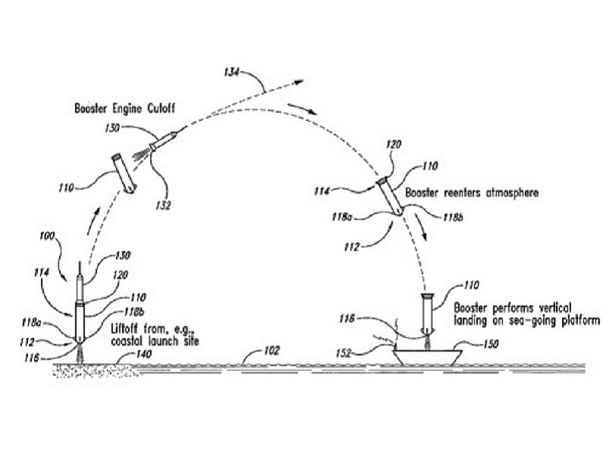We have seen a shift in innovation in the space sector from previously state-owned activities to now private [...] activities, operated by the likes of SpaceX, Blue Origin and Virgin Galactic. As a consequence, the protection of intellectual property in the space sector is rapidly increasing.
Saturday 20 July 2019 marked 50 years since Neil Armstrong first stepped on the moon and inspired millions around the world to enter careers in science and engineering.
In the intervening years, we have seen a shift in innovation in the space sector from previously state-owned activities to now private and commercial activities, operated by the likes of SpaceX, Blue Origin and Virgin Galactic. As a consequence, the protection of intellectual property in the space sector is rapidly increasing.
Blue Origin LLC, for example, have a number of patents granted to innovations ranging from multiple stage rocket systems and new composite structures for aerospace vehicles, to methods for compensating for wind prior to engaging airborne propulsion devices for enabling reusable launch vehicles to land.
Why protect innovations that are going to be used in space?
Because intellectual property (IP) rights are territorial rights, at first sight the thought of protecting inventions that are going to be used in space may seem counterintuitive.
However, the US Patent Act (35 U.S.C.§ 105) states that any invention made, used or sold in outer space on board a spacecraft that is under the jurisdiction or control of the US is considered to be made, used or sold on US territory. Therefore, US patents may indeed cover activities in outer space.
While many other countries don’t have similar provisions written into law, there are reasons those active in the space sector should look to cover territories other than just the US. For example, before a satellite or innovation is actually in space, it is typically designed and made somewhere on Earth. Patent rights can, therefore, cover those activities that take place on Earth.
However, careful thought needs to be given as to how such patents are drafted and where they are filed; what activities are you specifically looking to cover? If the patent is to be directed to a physical object, e.g. a rocket or engine, then obtaining protection in territories where the object is designed, made and likely to be launched from (both by you and a competitor) seems prudent.
But what if the patent is to be directed towards a new method, such as a new way a satellite may communicate with objects on Earth? In such cases, the patent claims need to be carefully drafted to capture only the activities that are performed on Earth within their scope, otherwise there may be a case of ‘divided infringement’ where the patent is never actually infringed because not all steps of the claimed method are performed in the territory which the patent covers. For example, a case of ‘divided infringement’ may occur when the patent claims cover steps of a communication method that are performed both on the satellite and on the user’s device. This would mean that neither entity alone performs all the steps necessary to infringe the claims of the patent. Instead, if possible, the patent claims should be directed towards the steps that only the user’s device performs for communicating with the satellite.
The UK space sector should be considering IP protection
Those active in the space sector should consider obtaining patent protection as part of a wider overall IP strategy in a bid to preserve their R&D investment and to achieve their long-term commercial goals. This is particularly the case for those businesses active in fast-growing areas, such as the UK space sector, which should consider obtaining patent protection to consolidate their new-found market position.
A recent report from the House of Commons Committee on Exiting the European Union noted that the UK space sector has trebled in size in real terms since 2000, and captures between 6.3 and 7.7% of the global market with a turnover in 2014/15 of £13.7 billion. This figure looks set to grow. The UK is a world leader in the development of small and micro-satellites, and the UK Government has committed to enabling low-cost space launch from the UK by 2021, with the view to developing commercial spaceports in the UK.
The protection of the intellectual property in such small and micro-satellites is as important as it is for intellectual property in any sector. If such small and micro-satellites are to be launched in the UK, then patents covering the country will cover the making, importing or use of any such satellites in Britain, which is particularly relevant if they are to be launched from there.
However, such businesses shouldn’t just limit themselves to the UK. When deciding on which territories to obtain patent protection in, businesses should also consider markets in which their competitors are active (i.e. where their competitors will be making competing equipment), where the end users of the satellites are likely to be (for example, if it is possible to cover a method in which equipment communicates with the satellite in a particular way) and other possible launch sites outside of the UK.
Businesses may also want to be mindful of potential licensing opportunities and should consider territories where that might be possible. A pragmatic approach strikes a commercial balance between the high cost of obtaining protection everywhere conceivable and obtaining protection only in the territories in which a business is based.
Andrew White is a Managing Associate at Mathys & Squire
________
Are you a recognised expert in your field? At Euronews, we believe all views matter. Contact us at view@euronews.com to send pitches or submissions and be part of the conversation.












